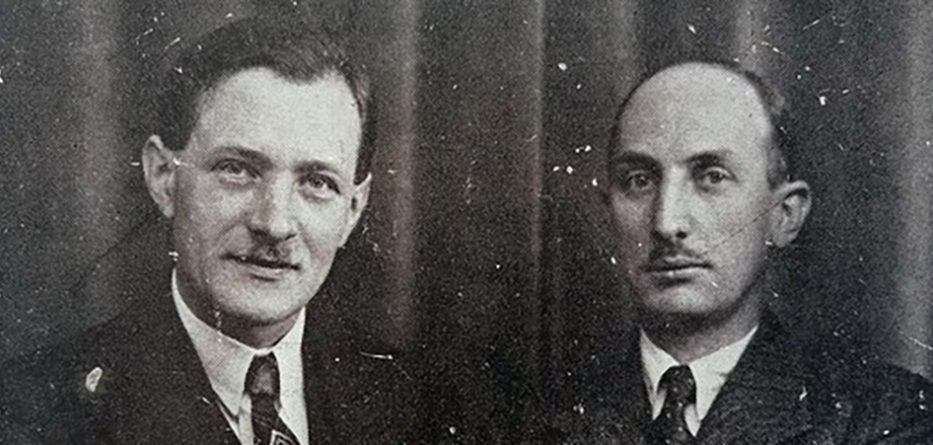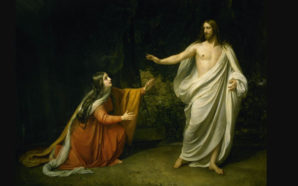On 27 January this year, the world will commemorate the liberation by Soviet troops of the infamous camp at Auschwitz, where so many people perished during the Second World War.
Sadly, this was not the end for all camps. Many others would continue to die in other camps over the next few months.
Among these were Fernand Tonnet and Paul Garcet (1901-1945), two members of the “founder trio” of the Belgian JOC, who died at the Nazi death camp at Dachau in January and February 1945.
Fernand Tonnet
Born in 1894, Fernand Tonnet met young Fr Joseph Cardijn within weeks of the latter’s appointment as a curate in the parish of Our Lady of Laeken near Brussels at Easter 1912. Having already learned the Sillon’s methods of formation from another priest, Fernand began immediately to work with his new mentor.
The outbreak of the First World War in August 1914 interrupted this work when Fernand was called to arms after Germany’s invasion of Belgium. Fortunately, Fernand survived the trenches although he did suffer lasting damage from the effects of gas.
Finally in 1919 he was able to return to Laeken where he soon teamed up again with Cardijn and two other young men, Paul Garcet and Jacques Meert, to launch the Jeunesse Syndicaliste (Young Trade Unionists), the forerunner of the Jeunesse Ouvrière Chrétienne (JOC) or Young Christian Workers (YCW).
For the next six years the dynamic group worked together to develop the emerging movement, eventually gaining the approval of Pope Pius XI for their initiative. This in turn led to an explosion of growth of the YCW with 400 new teams launched in 1925 alone.
Elected as national president at the first national congress in 1925, Tonnet continued to play a leading role. In 1927, he travelled to France to assist in the launch of the movement in Paris and Lille, where he was welcomed as the first “international president” of the emerging movement.
As the movement continued to grow, he helped organise many of its major events, including the first pilgrimage to Rome in 1929. He also had a particular talent and interest in publishing and was instrumental in the launch of the movement’s colour magazine, JOC.
Even more importantly, he played a key role in forming a whole generation of young leaders of the 1920s and 1930s, a period that has come to be recognised as a Golden Age of the JOC.
In 1934, now aged 40, he relinquished his post as president and went to work with the CSC Christian Trade Union in the Charleroi region, where he developed a formidable reputation as an organiser and advocate for worker rights.
In 1938, he changed tack to join the Action Catholique des Hommes (Men’s Catholic Action) movement, where he again made excellent use of his talent in developing publications and resources for local teams and leaders. There he remained until his arrest in 1943.
Paul Garcet
Born in 1901, Paul Garcet first came into contact with Cardijn around 1915 via the Pius X Eucharistic League in the parish. Soon after he also joined the local “patronage” or parish youth club, where he got to know Tonnet albeit, given their age difference, from afar.
By 1919, the war was over and Paul was eighteen. He now teamed up with the recently returned Tonnet and the young metalworker, Jacques Meert, to work on establishing the Young Trade Unionists.
Soon after, Cardijn found him a job as an accountant with the Christian Trade Union Federation in Brussels, enabling him to devote much energy and time to the promotion of the new movement.
At the first JOC congress in 1925, Garcet was elected national treasurer. Soon after, together with Tonnet and Meert, he became a fulltime worker for the movement. Later, Cardijn would describe them as the “founder trio” of the movement with “Fernand, the head, Paul, the heart and Jacques, the hands.” Others added Cardijn’s name to the list as the “fire” or the “soul” of the team.
As treasurer, Paul successfully tackled the difficult challenge of ensuring that the movement met its budget needs, always a challenge but particularly in those early years of rapid growth. Indeed, the growth of the movement’s assets and resources during this period witnesses to the effectiveness of his work.
During this period, he was also responsible for JOC’s vocational orientation program for young people. Finally, in 1933, he took leave of the movement to marry Jeanne Partous, another pioneer and co-founder of the JOCF in the Brussels region. Together they had three children.
In 1935, he became administrative director of La Cité Nouvelle, a progressive Christian magazine while he also worked to develop a successor movement to the JOC, the Ligue Ouvrière Chrétienne (LOC) or Christian Worker League.
Meanwhile, he continued to collaborate with Tonnet on the development of a network of former YCW leaders.
Sadly, much of this work was interrupted by the outbreak of World War II in September 1939.
Arrest and imprisonment
In 1940, Belgium was once again occupied by invading German forces. Yet despite dangers, Tonnet and Garcet continued their apostolic work.
Although they were not formal members of the underground resistance, they nevertheless took many risks to provide aid to those in need. Inevitably, their actions came under scrutiny.
Paul Garcet was the first to be arrested at the beginning of June 1943 for allegedly helping to provide lodging for a parachutist member of the Resistance. Fernand, who had telephoned Paul to ask his assistance for the task, was quick to blame himself for the arrest.
Several days later, Fernand was himself interrogated by the German Secret Police (Geheime Feldpolizei or Gestapo) and accused of having failed to report the location of the parachutist. At the beginning of August, the secret police returned again on several occasions, seeking to arrest him. Fortunately, he was absent each time but it was clear that his days of freedom were numbered.
At this point, Fernand could have himself sought to take refuge. However, fearing that others would be blamed if he disappeared, Tonnet refused to leave, despite the entreaties of his friends and colleagues.
Finally, on 10 August, the police returned and were able to arrest and imprison him at the Saint Gilles prison, where Cardijn had also been interned and where Paul Garcet along with other of their colleagues were also being held.
At the end of August 1943, both Fernand and Paul were transferred to the “death camp” at Esterwegen in north-west Germany. Here the task of dehumanising them began. They had their heads shaved, their clothes taken and they were given numbers by which they would be identified.
They were both classified among the most dangerous prisoners with the initials “N.N”, which stood for “Nacht und Nebel”, literally “Night and Fog”, signalling that all trace of their existence was to disappear. As Marguerite Fiévez wrote in her biography of Tonnet, it was a kind of “death sentence without the name,” turning them into “living dead.” Together with them were a number of other former jocist leaders and chaplains.
Here they were put to work sorting cartridges and recycling materials for use by the Nazi war machine. In response, they both looked for ways to slow down and impede the work.
Doing the least work possible, they both sought to come to the aid of other prisoners, offering them spiritual and emotional support in their distress.
Tonnet and Garcet remained at Esterwegen for seven months until 20 March 1944 when they and others were moved to another death camp at Bayreuth (known as the Flossenbürg camp), where they forced to do hard labour. In these conditions, their health slowly began to decline. On 21 May, Tonnet recorded that he now weighed a mere 51.5 kg.
At the end of summer 1944, this labour ended and they were both henceforth confined to their cells. Now Fernand and Paul were again separated from one another. Nevertheless, they both continued to provide moral and spiritual support to their fellow prisoners.
Finally, on 29 November 1944, the Bayreuth camp was emptied and many prisoners transferred to the sinister camp at Dachau in Upper Bavaria. By now, the temperature had fallen below freezing as low as 15°, 18° and 22° degrees below zero on occasion.
Here around 40 men were lodged together in three rooms. By now, most were already too feeble to work and spent the days in bed. Fernand was in a greatly weakened state. Nevertheless, he continued to gain the admiration of his colleagues.
“The impression I had of Fernand Tonnet at Dachau perfectly confirmed the impression I already had of him,” one former JOC chaplain, Fr Mauroy, who survived the camp, later wrote. “He was a layman extremely close to God, with a great delicacy of conscience. He was truly a fervent devotee of sanctity.”
“However, you had to discover this from the inside without looking at the outside of a man who had already lost all the dash and dynamism he once had,” Fr Mauroy concluded.
“I saw him,” recalled the Jesuit theologian, Fr Léon de Coninck, who later wrote of his experience in a book, Dachau, bagne pour prêtres (Dachau: Prison for priests). (See also Guillaume Zeller, The Priest Barracks: Dachau, 1938-1945). “He was in a terrible state, lacking clothes, worn out with fatigue and dying of hunger.”
But when food packages arrived from the Red Cross and there was one too few for the number of prisoners, Tonnet gave up his own parcel in favour of another prisoner. And when other parcels arrived later, he shared this with others.
Together again for the last time, Fernand and Paul continued to help organise prayer and even covert Mass services within the camp.
Death
But this did not last long. The month of January was extremely cold. Paul had come to the end. By 20 January, he was already in a close to comatose state. On 23 January, he finally succumbed with Fernand at his side.
Tonnet’s own demise was also now only a week away as he continued to weaken to the point he could no longer eat.
“That’s it!” he told his companions on 1 February. “I can’t continue. I no longer need anything!”
By the morning of 2 February 1945, he too was dead. Less than three months later, Dachau too was liberated, this time by American forces. But it was too late to save the JOC founders.
Cardijn’s tribute
Cardijn of course never forgot Fernand Tonnet’s and Paul Garcet’s contribution. In 1965, just after he had become a cardinal and as Vatican II neared its conclusion, he gave his backing to calls for their beatification.
“It was not primarily their arrest, stay and martyrdom in the Dachau camp that set them apart for the heroism of holiness,” Cardijn said at the time. “Many others have displayed a similar sublime heroism.”
“No, their whole adolescence and youth was marked by the faith and an apostolic mission, by daily recourse to the most authentic sources of holiness and apostolate, by an unparalleled charity and renouncement, by goodness, gentleness and perseverance in the service of the humblest and most abandoned,” he continued.
The Second Vatican Council had addressed “the great issue of the apostolate of the laity,” Cardijn noted, in which a number of Council Fathers had “emphasised that lay people in the Church should and could achieve the highest levels of holiness,” Cardijn noted. However, “we can and must pray for this with the sole intention of serving the glory of God, which manifests itself in his saints.”
“And let us hope that it will be displayed more and more in the heroism of lay saints,” Cardijn concluded.
Conclusion
As we approach the 75th anniversary of their deaths, it is illuminating and moving to recall the commitment and sacrifice of Fernand Tonnet and Paul Garcet.
The fact that Vatican II endorsed the lay vocation in the world that they modelled and embodied is perhaps the greatest tribute to their example, which deserves and needs to be recognised.
Sources and references
- www.fernandtonnet.com
- Marguerite Fiévez, La vie de Fernand Tonnet, 1947.
- Adrien Tonnet, Fernand Tonnet, Mort à Dachau, 1945.
- Marguerite Fiévez, Life and Times of Joseph Cardijn, 1974.
- Léon de Coninck, sj, Dachau, bagne pour prêtres, 1945.
- Paul Garcet (French Wikipedia)
- Fernand Tonnet (Dutch Wikipedia)
Stefan Gigacz is an Honorary Postdoctoral Researcher at the University of Divinity and Secretary, Australian Cardijn Institute.
With thanks to Stefan Gigacz.








